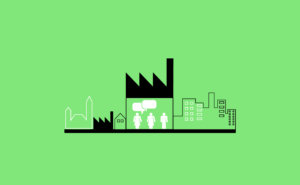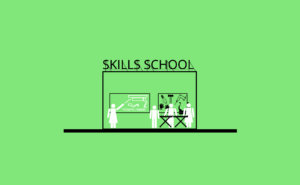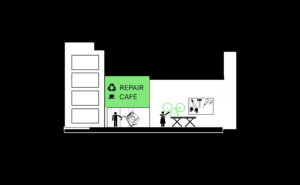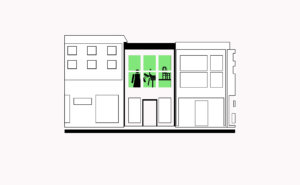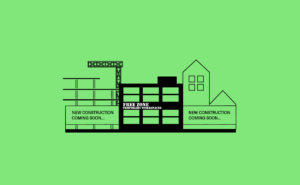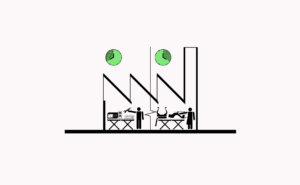
C.6 Strategic Access to Multimodal Mobility
The location of a business will depend on defining strategic priorities regarding accessibility by clients, partners, staff and the cost of space.
[Context] The price of land and the accessibility levels are heavily connected. Sites that are easily accessible by many different modes of transport have the evident advantage of giving businesses a greater levels of choice of who to work for or work with. Businesses must therefore weigh up the cost-benefits of accessibility choices over land values. Accessibility can concern three particular users: clients, partners and staff. These three user types are likely to have very different needs. Low paying manual labour work will generally need to have access by public transport otherwise businesses will struggle to find staff. High-tech manufacturing clients will likely travel by private transport and will be frustrated if there is no parking adjoining the business. Business conditions are changing. Increasingly businesses are outsourcing their logistics (refer to C.7 Links to Transport Infrastructure), while the boundaries between clients, partners and staff are continuously being blurred. This makes access to multi-modal mobility strategically important for businesses interested in a variety of staffing options and flexibility for clients. The question is, which modes are the most relevant? These can include soft modes (walking and cycling), collective transport (rail and buses), private transport (links to highways and parking spaces are important) and even airport links. Multi-modal refers to the choice of taking a range of these forms of mobility for the main travel leg (a rail traveller will likely do a portion of walking).
[Problems] The biggest challenge is when there are serious tensions between different aspects of a business. Staff, clients and partners may reside in very different places and travel by different types of mobility. Finding a location that is affordable and suits all these user’s needs is highly unlikely. Public facing businesses will likely focus on clients’ needs. Employees can be the most critical aspects of the business but rarely do businesses prioritise employees’ interests. Employees with lower skills are far less likely to be able to afford to travel long distances, making public transport or soft mobility access essential. For specialist knowledge workers, jobs may be so rare that long travel distances are simply inevitable.
[Forces] Mobility and accessibility are serious defining factors to determine a business’ competitivity, capacity for innovation and production costs. Businesses will need to decide if to prioritise links to staff, clients and partners or if to prioritise logistics and C.7 Links to Transport Infrastructure. Furthermore, not all mobility solutions are suitable all day and every day of the week. Public transport may not run between midnight and 6am, peak hour congestion can make car travel infeasible while cycling and walking may be unsafe at the best of times. Business can decide to locate in compact inner city sites to take advantage of a diverse range of multimodal mobility, but this may come at a price in terms of R.8 Moving Things Efficiently or B.8 Space for Storage, while limiting their capacity for growth. Changes to accessibility regimes in cities, such as congestion charging or pollution regulation (see C.2 Negotiated Qualities and Environmental Criteria), can add a competitive disadvantage to local manufacturers as proximity to markets and clients increases costs. Furthermore, as inner-city mixed neighbourhoods undergo ‘regeneration’, they also attract gentrification and the likelihood not only of increased costs but also reduced accessibility due to wider footpaths or difficult conditions for loading and unloading vehicles. This highlights the need to carefully consider the N.8 Quality Urban Environment in Making Areas.
[Solutions] Prioritise manufacturing locations according to a variety of available mobility options in order to draw on workers, employees and clients. Businesses should resist simply looking for the most affordable land. Sites should be considered that benefit accessibility of employees and clients. Workers with manageable home to work times (around 30 minutes) are happier and less stressed, contributing to R.5 Fair Work Conditions. Creative solutions should be considered to deal with high(er) land costs such as B.1 Making Around Courtyards, a shared B.2 Yard for Logistics or even outsourcing storage with a N.6 Centralised Logistics Zone. Furthermore, bike parking and showers should be provided to encourage workers to use soft mobility while public authorities should provide suitable cycling and pedestrian infrastructure into industrial areas. As the pressure on industrial land increases, public authorities are allowing or encouraging industrial intensification and co-location with other land uses. In doing so, public authorities should also improve public transport services or install safe soft mobility infrastructure to compensate additional users and avoid dedicating precious road space to parked cars.
[Contribution] Add contributions here.
